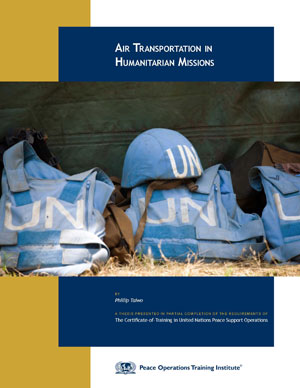Air Transportation in Humanitarian Missions
COTIPSO Thesis: Approved
Student: Taiwo, Phillip
Completion Date: Jan 2005
An excerpt from the thesis:
In recent years humanitarian relief operations have increased in great numbers, just as they have become increasingly complex as the problems they set out to alleviate. Research into the present international political landscape goes some way towards explaining this quantitative aberration; as attitudes of impartial observers have equally changed towards multilateral aids in post-conflict environments, especially after the terrorist attacks on the United States of America (U.S.A), on September 11, 2001 (9/11). However it is measured, humanitarian aid has been growing in volume and funds available for these charitable and caring ventures have more than doubled between 1990 and 2004. It is interesting to note that the growing trend in the number of humanitarian missions around the world is reflected in the availability of air transport services through which the missions are carried out.. Increasingly, many organizations in this sector are demanding air charters, for obvious reasons. Air transport is therefore crucial to humanitarian missions, promising a fast response and the capacity for contacting remote areas lacking other means of communication. Organizations investingin air charter services for humanitarian missions include the United Nations (UN) and a number of Non-Governmental Organizations (NGOs).
